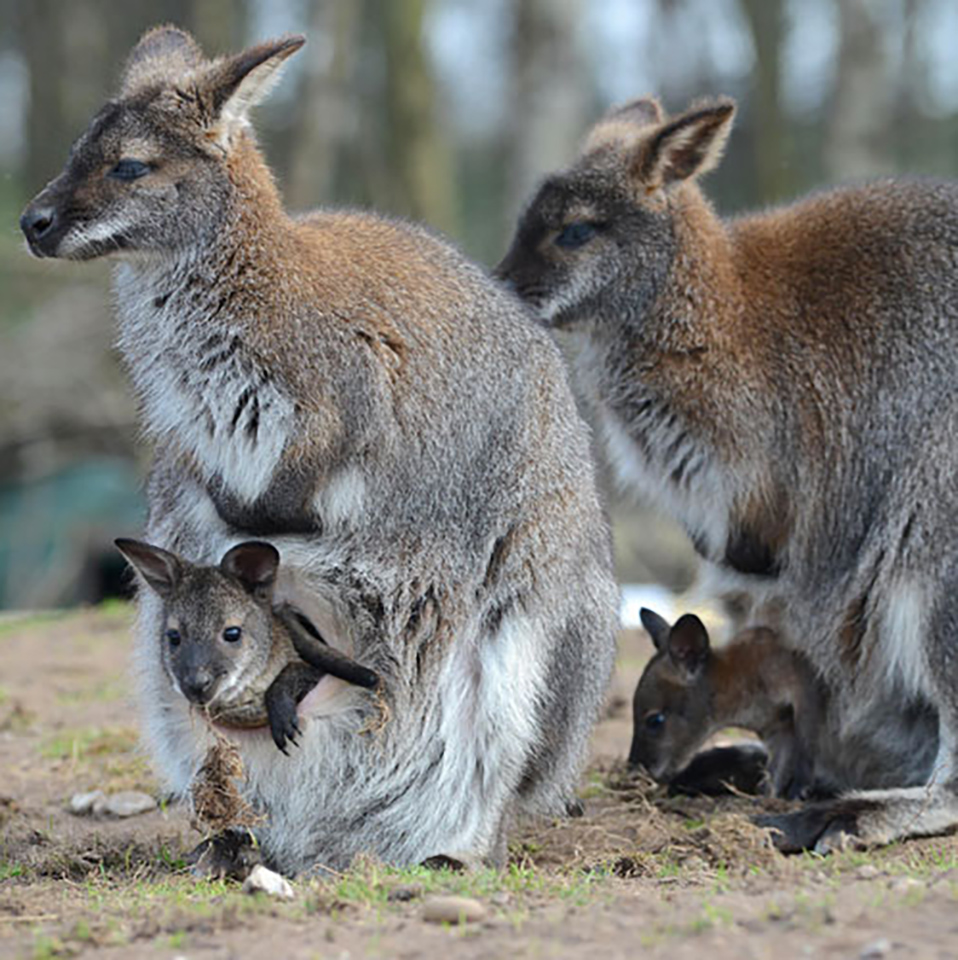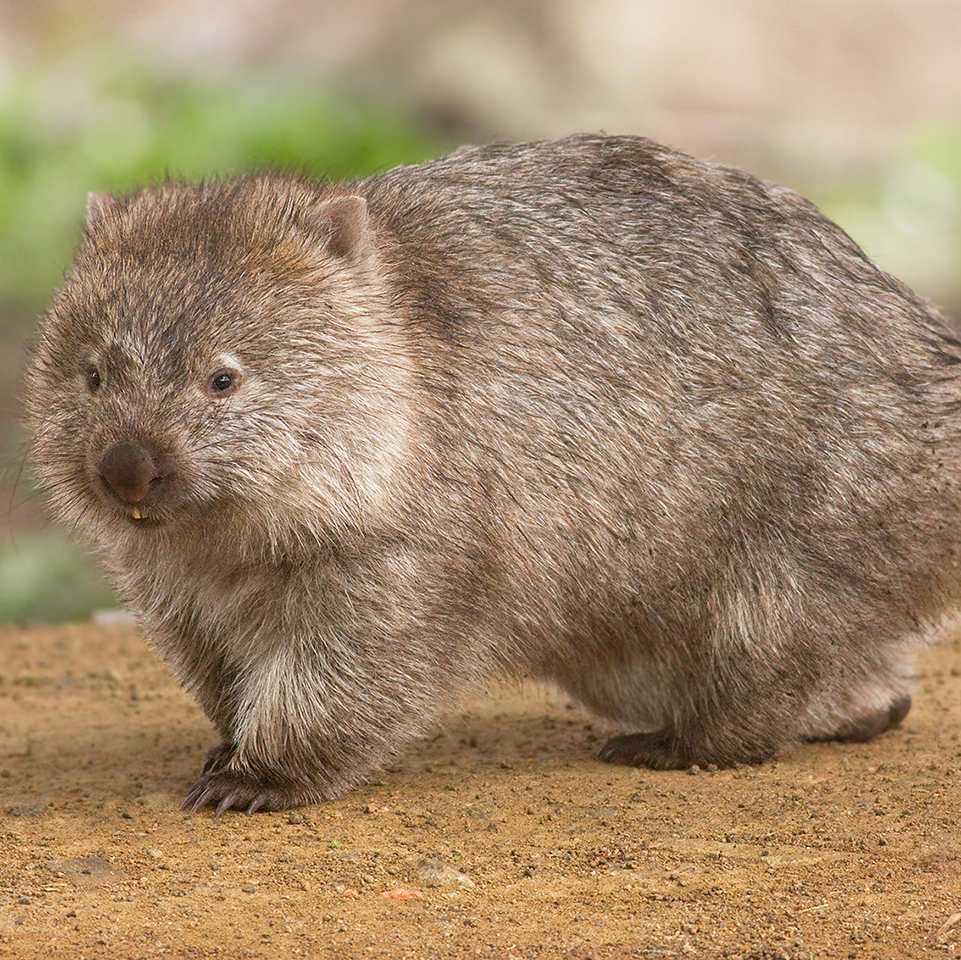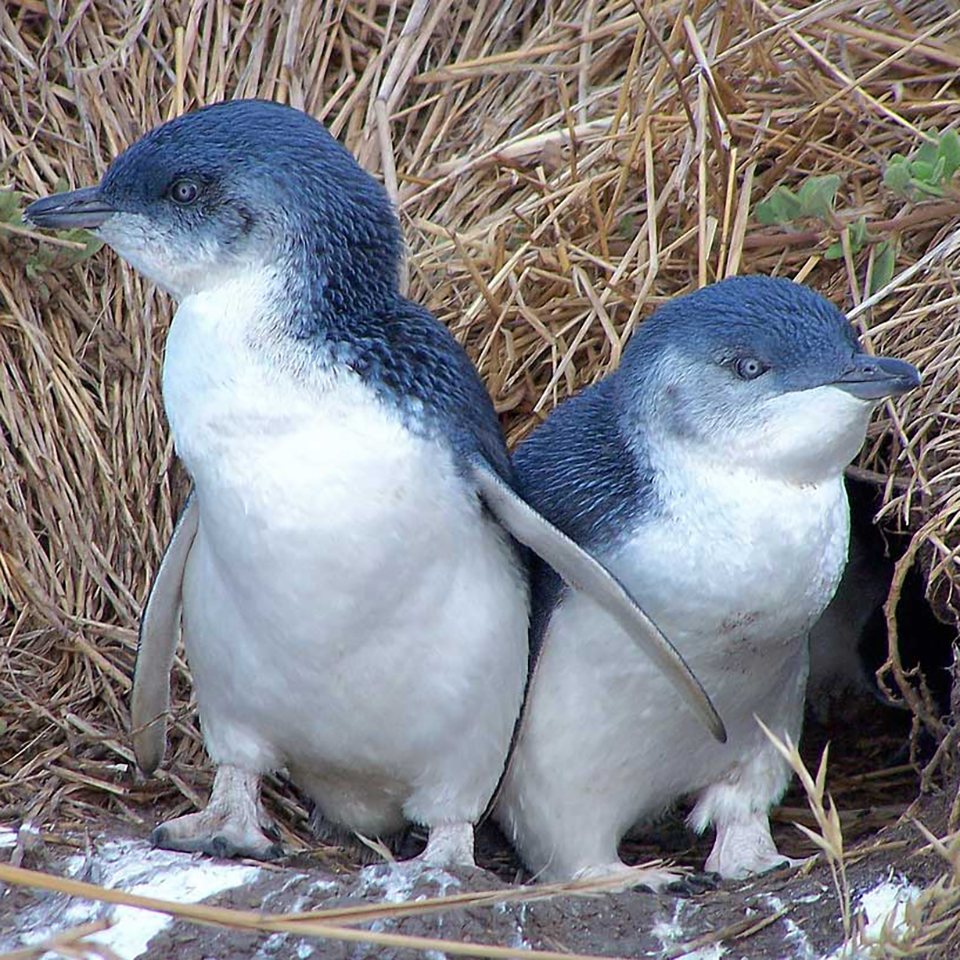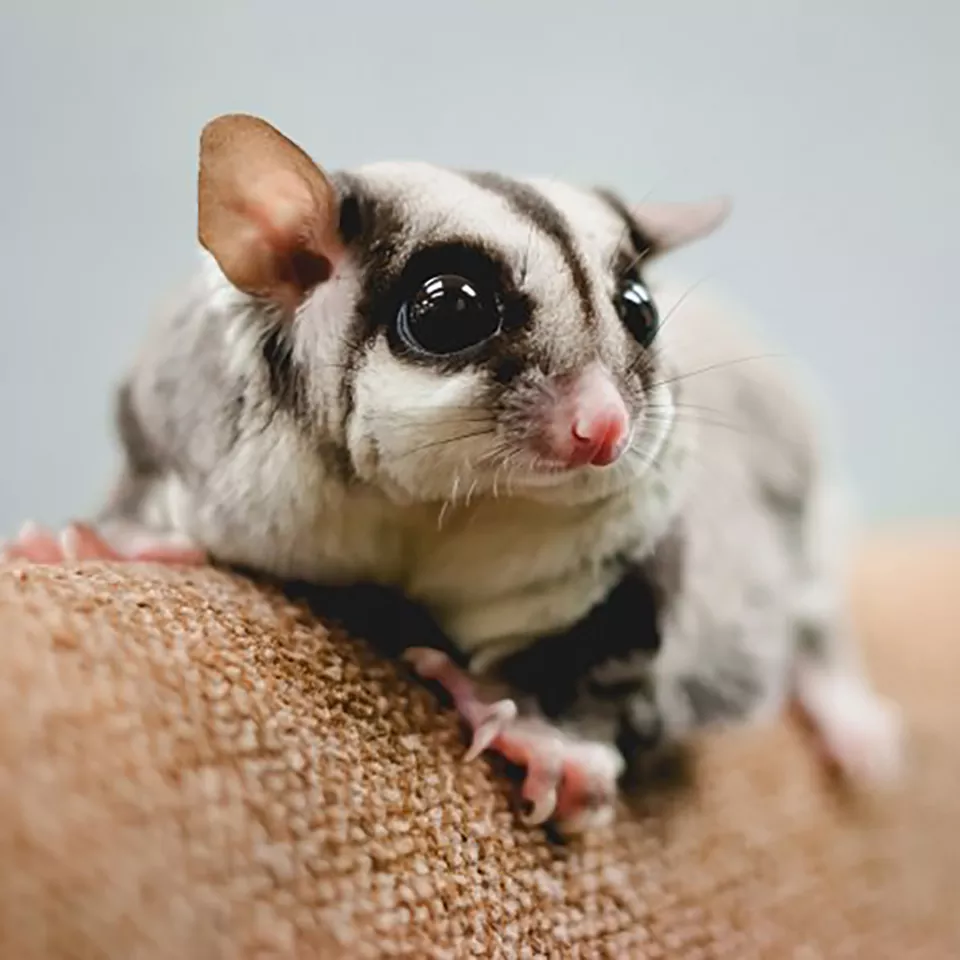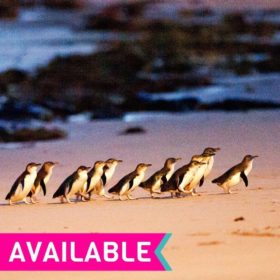Cutest Australian Animals And Where To Find Them


Learn about our most adorable Australian native animals
Australia is well known for their cuddly koalas, but they are not the only adorable native animals we have.
From wombats to possums there are so many special and unique animals to see in Australia. Some can only be found in certain areas, some are easily seen in the wild life, and some are favourites of our zoos. Read on to learn about our favourite Australian native animals.
From wombats to possums there are so many special and unique animals to see in Australia
Koalas
Despite the nickname ‘koala bear’, koalas are actually marsupials. This means like kangaroos, they carry their young in their pouch. Their life doesn’t get much more active when they come out, as koalas are known for sleeping for up to 20 hours a day! They little energy they have is maintained by a diet of eucalyptus leaves, which is why they mostly hang out in trees for easy access.
Depending on where in Australia they live, koalas can differ in size and colour. Southern Australian koalas are more likely to be larger and darker compared to their northern family. Koalas have reasonably distinctive features with their large fluffy ears, this is because their sense of hearing, along with their sense of smell is most developed. This helps them as they do not have great eyesight.
Koalas can be found in almost every Australian zoo, and they are very popular for tourists to take pictures with due to their cute appearance and ability to be held reasonably easily. We recommend heading to Australia Zoo, home to 11 koalas, including experiences where you can meet and cuddle with them.
Wallabies
A scientist would probably disagree with me here, but wallabies are basically baby kangaroos that stay baby kangaroos. Part of the kangaroo family but distinctive for their smaller size. Meaning they have the cute aspects of kangaroos such as their stance and smaller hands and bigger feat, but in an even more adorable package. Like kangaroos and koalas, they use their pouch to protect their young.
Wallabies have a herbivore diet, mostly eating grasses and plants, with their longer jaws specifically designed for their diet. This means they do well in most areas across Australia, although they can also be found in some surrounding islands. However they mostly stick to more wooded areas than most other varieties of kangaroos.
You will find wallabies across Australia, and plenty of zoos will have experiences where you get to feed them. However, for seeing them in the wild, travelling with us through Australia’s outback is the way to go.
Wombats
Despite being the closest living relative to Koalas, wombats are a very unique animal. Like other Australian marsupials, they have a pouch in which they carry their young. However, wombats have a unique backwards facing pouch, allowing them to burrow in the dirt without it entering the pouch. The cutest aspect of wombats is their short legs on their round bodies, as well as their adorable furry faces.
Most wombats in the wild are nocturnal, meaning it can be rare to catch a glimpse of them in the wild, and is considered lucky to do so. Your best chance of doing this is by visiting some of Australia’s protected national parks such as Wilsons Promontory National Park, or taking a trip along the Great Ocean Road. Make sure some of your travels are during dusk, as that is when they are most likely to leave their burrows. The best way to do this would be on our 3 Day Great Ocean Road, Phillip Island, and Wilsons Promontory Tour.
If you don’t have the time available for tours, Melbourne Zoo, Healesville Sanctuary, and most other Australian zoos normally have wombats in protected environments, so they can feel safe and you can catch a glimpse.
Quokkas
One of the lesser known cute Australian animals is the quokka. They are adorable little marsupials that stick to a few main regions in Australia. They are much loved by visitors due to their curious small faces and friendly nature. However despite their willingness to approach humans, it is normally advised to not get too close to them, instead let them approach you. To protect their health, it is also important to never feed them, as human foods can be dangerous to their health.
By far the best chance to see quokkas is by visiting Rottnest Island of the coast of Perth. In fact this island was named after their abundant population there, when a dutch explorer mistook them for rats and names the island ‘rat nest’ island. Whilst quokkas can also be found in zoos across Australia, Rottnest Island allows you to see them in their natural habitat, and perhaps even take a famous ‘quokka selfie’.
Bandicoots
Bandicoots may look too much like small rodents to some people, but don’t discount them as being an adorable little animal. Their gentle appearance and long nose distinguish them from rodents and instead make them adorable, and at times helpful, little beings. They also have some similarities to a kangaroo, with longer hind legs and smaller front legs.
Bandicoots can be found in grass and even residential gardens throughout Australia, normally appearing during dusk and dawn, but hiding during the heat of the day. For those living in Australia, they are considered friends when found in gardens, with many people even making their gardens more suitable for bandicoots to help their declining population.
Keep an eye out for bandicoots across your Australian travels. Ask the locals where you are staying if they know of any living in their gardens, and also watch for them in grassy plains. For guaranteed sightings of bandicoots, check out their enclosure at Werribee Open Range Zoo, which attempts to replicate their natural environment.
Platypus
The platypus is one of Australia’s most loved animals, both by us and international visitors to Australia. Their appearance is unlike any other animal, with their long ‘duck bill’ and flat feet, perfect for water but making them awkward on land. They are also unique species, being only one of two in the world, alongside echidnas, that are mammals that lay eggs., Platypuses live in freshwater sources across the east coast of Australia, and are thriving with no risk of endangerment.
However they tend to be shy creatures, and have a nocturnal lifestyle. This means they can be hard to spot in the wild, even for those living near their homes. This means that for both Australians and tourists your best chance of getting to interact with platypuses is by visiting them in zoos. Many zoos have them available to view, and their is even some where you can get close and join in with them, such as Healesville Sanctuary.
Despite their shyness, you can spot them in the wild with certain dedicated tours through their favourite waterways. Found in freshwater ways in the eastern and south eastern Australian coasts, we can create a perfect tour for you to get to explore.
Fairy Penguins
After Happy Feet came out everyone is fascinated by penguins, and they all have a certain amount of charm, but fairy penguins are by far the most adorable of the species. Whilst their official name is little penguin, fairy penguins is a cute nickname, and is what they are called by most Australians. These penguins rarely grow taller than 35cm, and spend most of their life in water.
Whilst sightings of fairy penguins are possible across Australia and New Zealand, it is well recognised that their main home is Phillip Island, of the coast of Victoria. Home to approximately 32,000 of these fairy penguins, Phillip Island is a popular tourist destination for anyone visiting Melbourne. Whilst it brings people for other interests, such as spectacular scenery, it is impossible to ignore the penguin population.
See them along with wombats on our 3 Day Great Ocean Road, Phillip Island, and Wilsons Promontory Tour, or take a Day Tour just the penguins sighting (trust me, its worth it!)
Sugar Gliders
There is no denying the adorableness of sugar gliders, ranging between 16-21 cm, these sweet little animals are found throughout most of Australia. They live in forests and wooded areas, as they live mostly in trees. Another nocturnal animal, sugar gliders are very active at night, mostly living in small family groups of up to 7 adults and their young.
Like their name suggests, sugar gliders not only use traditional climbing techniques of other tree dwelling marsupials, but also use their body to swoop between trees. It is the extra flaps of skin between their back and front legs that allow them to do this so easily.
They are considered so cute, and have reached international recognition, leading to them being popular pets, mostly in America. In the wild in Australia you have a chance of spotting them in any forest, particularly along your travels of the East Coast of Australia. Luckily, due to their popularity, they can also be found at most zoos across Australia, meaning you have a good chance at getting to see these little gliders in action.
Too Many To Choose?
With Australia having such a diverse range of animals that are unique to us, it’s always something you want to make sure to see on your Australian trip. However, with everything we have to offer, you don’t always want to plan your trip just around the animals. Luckily almost all of our longer tours include chances to see these animals in action, because they are abundant across Australia, and our variety of animals is one of the unique things that makes it a special country.
One of the unique things that makes Australia a special country.
If seeing some of our special animals is part of your goals for your travels, we recommend our trips between Adelaide and Perth (includes a super unique animal experience, swimming with sea lions) as well as Adelaide to Darwin. Both of these tours will show you a range of what Australia as to offer. They take you along the different landscapes of Australia, and therefore you get to experience a range of animals.
With limited time, and animals as higher priority, you can’t miss our Great Barrier Reef Tour, the well known home of Australian wildlife, including a zoo trip! Speaking of the reef, and Australia’s underwater sights, check out our post on the Whitsundays, for a whole other range of Australian animals.
Related article: Swimming with Sea Lions
Explore the Melbourne Tours
-
National Whimit Bus Pass | Greyhound | Unlimited Travel
$399.00 – $849.00 Select options -
Greyhound East Coast Whimit Bus Pass – Melbourne to Cairns Hop On Hop Off
$289.00 – $449.00 Select options -
Great Ocean Road and 12 Apostles Day Tour
$125.00 Contact us for availability before booking - Add to cart -
Phillip Island Day Tour
$139.00 Contact us for availability before booking - Add to cart


